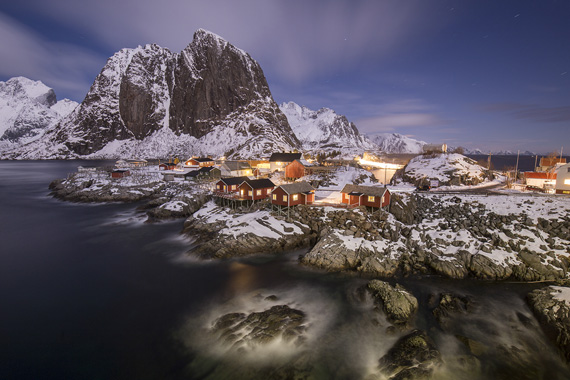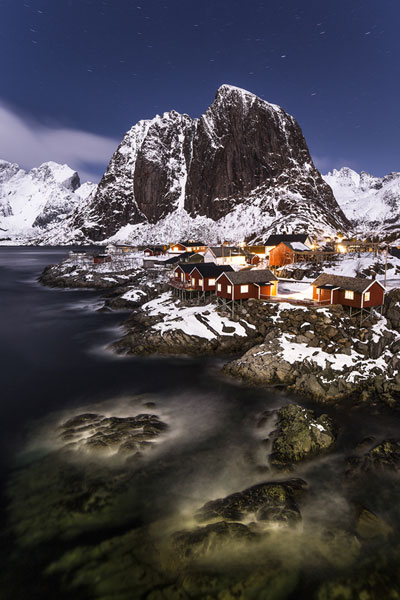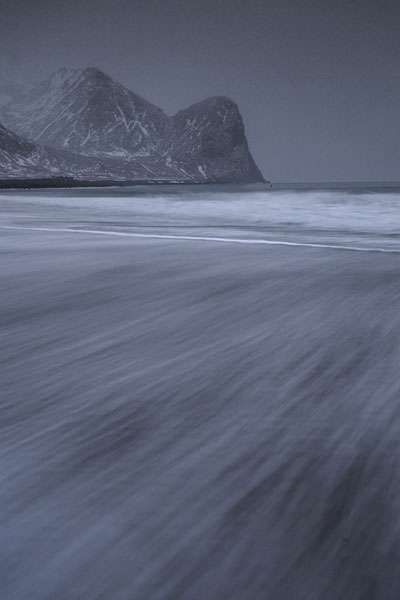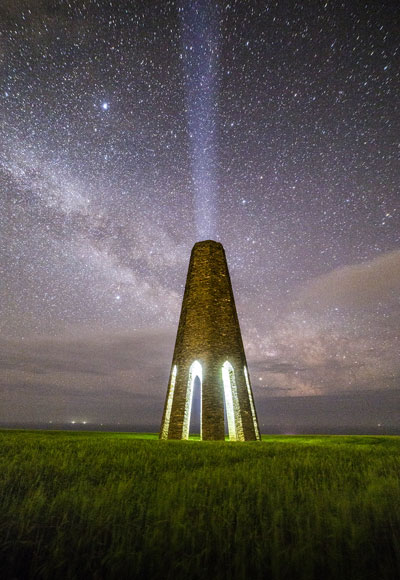Have you ever been at a location late into the blue-hour and wondered if you could somehow keep on shooting those landscape shots? Well you can, so why not use the biggest reflector known to man and utilize the moon to light your landscape and undertake some “Moonscape” photography.

Norway Lofoten. “Moonscape shots can really help to achieve unique images such as this shot from Hamnoy” Credit: Sebastien Coell Photography
In this post I will give you some tips and tricks for photographing nighttime landscapes that have been illuminated by the Moon.
Why Use the Moon in Your Landscapes:
So I’m not going to go out and recommend you head out on a full moon to capture those purest milky way shots – the moon creates far too much light pollution for this, but if you’re shooting under the correct circumstances the moon can really aid your night time photography creating some really unique images.
At first though it may seem that using the moon could be quite detrimental to your photography, reducing the quality and effectiveness of your images. In fact, however, using the moon helps you overcome a lot of problems associated with night time photography.
1. It lets you shoot landscapes that are illuminated, this allows you to avoid a complete silhouettes, significantly lightening those shadows to bring detail into the image.
This is very important when you’re trying to include subjects such as mountain ranges or foreground interest into your images.
2. The extra light on the landscape helps you to focus your lens, for those that have undertaken milky way or night time photography, you will know how frustrating trying to focus can be; it often involves several test shots, often taking over 20 seconds per shot.
3. It just helps with navigating and seeing your equipment. This one’s simple, walk along without a torch and see home many times you trip over compared to a full moonlit night.
What Difficulties May You Experience When Undertaking Moonscapes:
Moonscape photography does have its difficulties, although technically your shooting with sunlight, the moon will cast a totally different light onto your scene, don’t expect to have the same tonal range you would during the day.
You can help the tonal range by playing with your white balance but don’t expect wonders, the above shot for instance was purely shot during a full moon behind the camera and the results are pretty good considering, the results will vary on how far through blue hour you are, this image at Hamnoy has been helped by some faint-ish light in the sky although with the naked eye it was pretty dark.
Like any photography post processing work can help to recover this, and you may have to boost some color ranges more than others, one thing with most moonscapes however, they are good at being balanced images with good highs and lows.
Another issue with moonscapes is the amount of noise and movement you will have in the stars from your long exposure. We all know length of exposure and ISO greatly affects your image noise, and the chances are, you’re going to be shooting long exposures at a high ISO at night.
The only thing you can do about this is to use as wide a lens as possible to gain an advantage over the 500 rule and to use as wide an aperture as possible also.
A quick note on the 500 rule for night time photography! The 500 rule is a basic rule of thumb to avoid movement or blurring of any stars into ovals or trails, simply take the focal range of your lens once corrected for sensor size, we will assume 35mm for this and divide 500 by your focal length, this will give you the period your shot can be taken over and still retain sharp stars.
For instance I shoot most of my astro-photography with a 14mm Samyang lens (Rokinon) this would give me a maximum exposure time of 500/14mm = 35.7s compare this to a standard 35mm kit lens of 24mm and your down to 500/24mm = 24s
You can see from this the focal length of a lens makes a massive difference to the amount of light you can gather before the stars turn into trails.

Norway Lofoten. “You can see clear movement in the stars in this image which is a result of shooting longer than the 500 rule would suggest” Credit: Sebastien Coell Photography
Having a wide lens and low aperture allows you to keep the ISO lower and shoot for longer, improving image quality and reducing noise, but remember noise is a big part of night time photography and don’t let it put you off, instead try and embrace it, noise can add grit and emotion to an image.

Norway Lofoten. “Night time photography and noise go hand in hand, this is a blue hour shot with some help from the moon taken at ISO 6400! Yes the noise is manic but the patterns in the water make for a very unique image” Credit: Sebastien Coell Photography
Some Tips to Use during Moonscape photography:
- Ultra- wide lenses and low apertures will help to improve the technical quality of your images, just remember to ensure you have enough DOF for the given aperture and your scene. With night time photography sometimes stepping up a stop can help with your overall sharpness.
- Ensure the moon is behind you or at least 130 degrees away from what you are shooting. This will greatly reduce the light pollution from it and help you capture the milky way or stars at the same time.
- If your planning on shooting into the moon, consider composites or blending, and use a wider aperture to capture some star-bursts (or is it moon-bursts)

Kingswear Devon. “This astro shot at Devon’s Daymark has really been enhanced by the light from the moon behind me, you can see how the grass is faintly lit up even away from the light below the tower.” Credit: Sebastien Coell Photography
So there you go, next time you’re out late with the camera, why not hang around a little longer and utilize the moon for some late night photography. Moonscapes are a lot less common than Astrophotography and Star Trails but why not give them a try, in fact the moon can be a good compliment to Astro, just make sure it is 180 degrees away from what your shooting.
About the Author:
Sebastien Coell Photography offers unframed and framed prints of the UK, Europe and Scandinavia from his base in Devon.
Like This Article?
Don't Miss The Next One!
Join over 100,000 photographers of all experience levels who receive our free photography tips and articles to stay current:





Leave a Reply